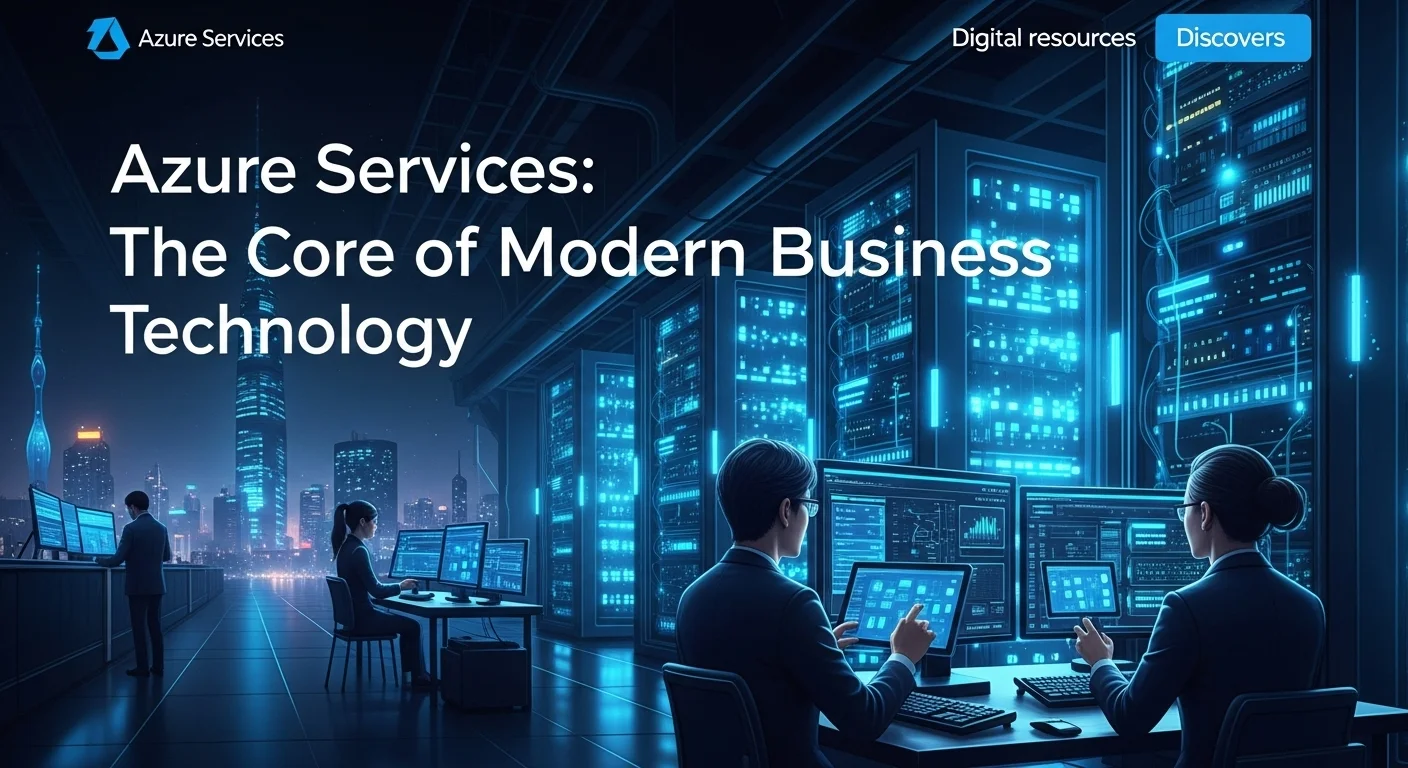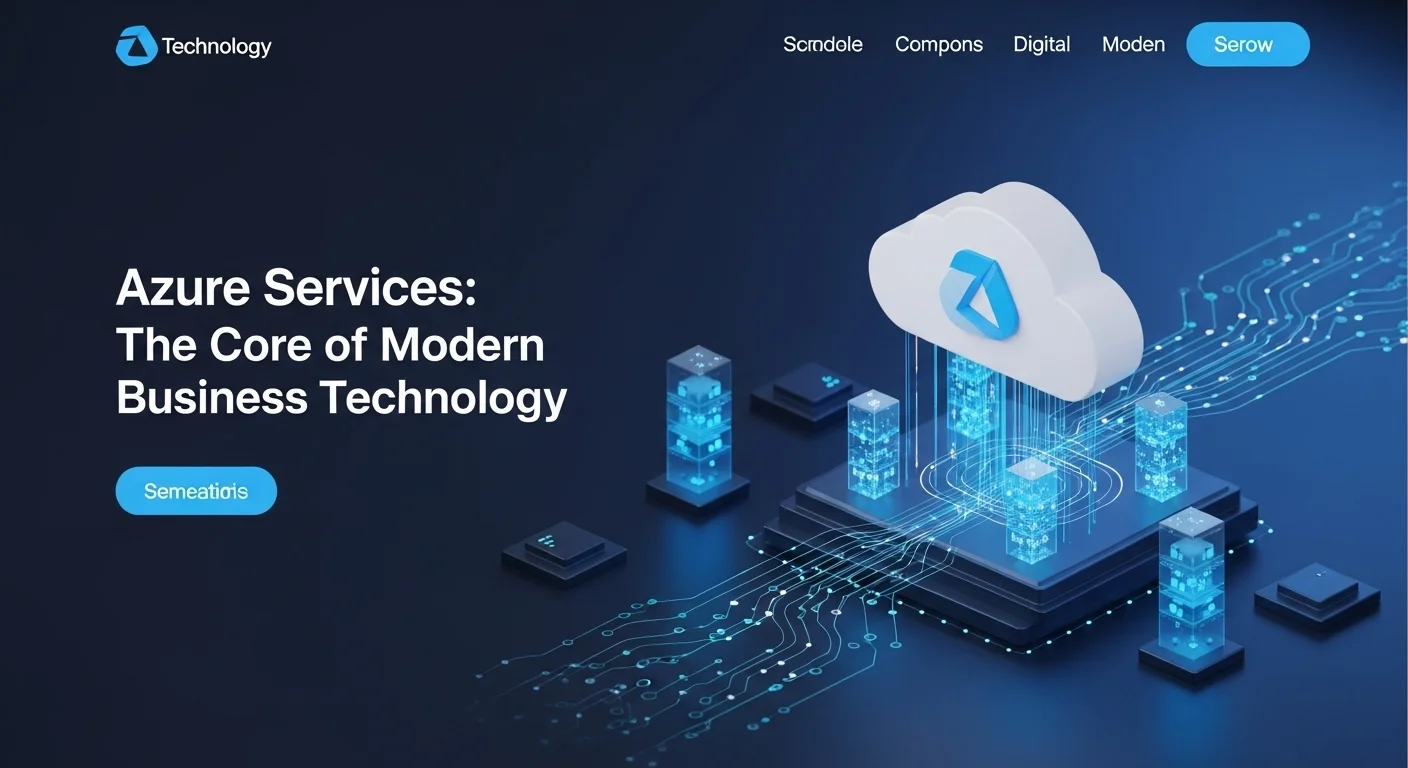A Human Guide to Azure Services: Powering Your Business Beyond the Cloud

Executive Summary
In my two decades working with IT infrastructure, I've seen technologies come and go. But nothing has reshaped the landscape quite like the cloud. Microsoft Azure, in particular, has evolved from a simple cloud provider into a powerful engine for business transformation. This article isn't just another technical list. It's a practical guide born from years of experience, designed to help you, whether you're a business owner, a developer, or just curious about tech. We'll cut through the jargon and explore what Azure really is, how its core services can solve real-world problems, and how you can use it to not just keep up, but to get ahead. Let's dive in and see how these tools can truly work for you.
Table of Contents
Table of Contents
- What are Azure Services and Why Do They Matter?
- A Complete Guide to Azure Services
- Expert Tips and Strategies for Azure
What are Azure Services and why do they matter?
In today's fast-paced world, you hear 'the cloud' mentioned everywhere. But what does it really mean for a business or a developer? At its heart, the cloud is about moving away from buying and maintaining your own physical computer servers. I remember the days of waiting weeks for new hardware to arrive just to launch a new project. It was expensive, slow, and inefficient. Microsoft Azure completely changed that game. Think of it as a massive, global warehouse of computing power, storage, and specialized tools that you can rent on a pay-as-you-go basis. This flexibility is its superpower. It allows a small startup to use the same high-end technology as a global corporation without the huge upfront cost.
So, what are Azure services? They are the individual tools and products within that warehouse. With over 200 available, they cover everything from simple web hosting to incredibly complex artificial intelligence. The real importance of Azure is that it lets you innovate faster. Need more power for a holiday sale? You can scale up your resources in minutes and then scale back down when the rush is over, paying only for what you used. This agility is essential for staying competitive.
To get a clear picture, it helps to understand the three main ways you can use the cloud, all of which Azure provides. Imagine you want to make pizzas.
- Infrastructure as a Service (IaaS): This is like renting a commercial kitchen. You get the space, the ovens, and the refrigerators (servers, networking, storage), but you bring your own ingredients and recipes (operating system and applications). You have full control. Azure Virtual Machines are a perfect example.
- Platform as a Service (PaaS): This is like ordering a meal kit. The service provides the pre-portioned ingredients and a recipe card (the platform and development tools). You just do the final assembly and cooking (write your code). Azure App Service, which simplifies web app deployment, is a classic PaaS.
- Software as a Service (SaaS): This is like ordering a finished pizza delivered to your door. You just enjoy the final product. Microsoft 365 is a great example of SaaS software you use over the internet.
Another key advantage is Azure's global reach. With data centers all over the world, you can run your applications closer to your customers. This means faster load times for them and helps you meet local data privacy laws. I've worked with companies that expanded into Europe, and being able to host their data in an EU data center with a few clicks was a lifesaver for compliance.
Security is, of course, a massive concern for everyone. Microsoft has invested billions into making Azure a fortress. It offers layers of security, from the physical guards at the data centers to advanced AI-powered threat detection services like Microsoft Defender for Cloud. This commitment to security and compliance gives businesses the confidence to move even their most critical operations to the cloud.
Finally, the sheer variety of services is what truly sets Azure apart. It's not just about servers and storage anymore. It's a launchpad for innovation. You can use Azure IoT services to connect smart devices, Azure Synapse to analyze massive datasets, or Azure AI to build intelligent apps that can see, hear, and understand language. These are the tools that don't just improve a business—they can completely reinvent it. In short, Azure provides the foundation and the advanced tools for any organization to build its future.

Complete guide to Azure Services in Technology and Business Solutions
Now for the fun part—let's look inside Azure's toolbox. It can seem overwhelming with hundreds of services, but most of them fall into a few key categories. Think of it as a massive workshop; you just need to know which tools to grab for the job at hand. By understanding these core areas, you can start piecing together the right services for your business challenges.
Core Infrastructure Services: The Foundation of Your Cloud
This is the bedrock of your cloud setup, giving you the fundamental building blocks and the most control.
Compute Services: This is the engine that provides the processing power for your applications.
- Azure Virtual Machines (VMs): This is your workhorse. It's like having a computer in the cloud that you can configure however you like with Windows or Linux. It's perfect for moving existing servers to the cloud with minimal changes.
- Azure App Service: This is a dream for developers. Forget worrying about the server; just upload your code, and Azure handles the underlying infrastructure, scaling, and security patching for you.
- Azure Kubernetes Service (AKS): If your application is built from lots of small, independent parts (microservices), AKS is the expert conductor that makes sure they all work together in harmony.
- Azure Functions: My personal favorite for efficiency. It’s code that only runs when triggered by an event, like a new photo upload. It's the ultimate 'pay for what you use' model, as you're not paying for idle servers.
Networking Services: These tools connect and protect your cloud resources securely.
- Azure Virtual Network (VNet): This lets you create your own private, isolated section of the Azure cloud where you can launch your resources. You control the network layout completely.
- Azure Load Balancer: When you have a lot of users, this service expertly distributes the traffic across multiple servers, preventing any single one from being overwhelmed and keeping your app running smoothly.
- Azure VPN Gateway & ExpressRoute: These are your secure tunnels back to your office. A VPN Gateway uses the internet, while ExpressRoute provides a private, dedicated line for maximum performance and security.
Storage Services: Azure offers different types of storage tailored for different needs.
- Blob Storage: Perfect for storing huge amounts of unstructured data like images, videos, and documents.
- File Storage: Think of this as a shared network drive in the cloud, easily accessible from your other servers.
- Disk Storage: These are the high-performance hard drives that you attach to your Virtual Machines.
Data and Analytics: Turning Information into Insight
Data is the new gold, and these services help you mine it for valuable insights.
Database Services: Whether you need a traditional relational database or a modern NoSQL one, Azure has a managed service for it.
- Azure SQL Database: This is the powerful and intelligent Microsoft SQL Server, but delivered as a fully managed service. Azure handles backups, patching, and high availability for you.
- Azure Cosmos DB: A truly global database. It's built for massive, worldwide applications that need lightning-fast response times for users everywhere.
- Azure Database for MySQL, PostgreSQL, MariaDB: If you love open-source databases, Azure provides them as fully managed services, making it easy to migrate your existing apps.
Analytics Services: These tools help you process and make sense of your data.
- Azure Synapse Analytics: This is an all-in-one powerhouse for data warehousing and big data analytics. It brings everything you need to analyze huge datasets into one place.
- Azure Data Factory: The digital plumber of your data workflows. It automates the movement and transformation of data between different sources and destinations.
AI + Machine Learning: Building the Next Generation of Intelligent Apps
Microsoft has made AI accessible to everyone, not just data scientists.
- Azure Machine Learning: A complete workbench for professionals to build, train, and deploy custom machine learning models at scale.
- Azure AI Services: This is my go-to for adding intelligence to apps quickly. It's a collection of pre-built models you can use through a simple API. You can add image recognition, real-time speech-to-text, or language translation to your app in hours, not months.
- Azure Bot Service: A platform for building, testing, and deploying intelligent chatbots that can provide customer service or automate tasks.
Security and Identity: Protecting Your Digital Assets
Azure provides robust tools to help you secure your environment.
- Microsoft Defender for Cloud: Think of this as your cloud security posture manager. It scans your environment for vulnerabilities and provides clear recommendations and threat detection.
- Azure Active Directory (Azure AD): The foundation of identity. It handles user logins, provides multi-factor authentication (MFA), and lets you control who has access to what.
- Azure Key Vault: A secure digital safe for your application's secrets, keys, and certificates.
This is just a glimpse into the Azure toolbox. The key is to start with your business goal and then explore the services that can help you achieve it. By combining these powerful tools, you can build solutions that are scalable, intelligent, and secure.

Tips and strategies for Azure Services to improve your Technology experience
Getting started with Azure is one thing; using it wisely is another. Over the years, I've seen companies save millions—and others waste thousands. The difference often comes down to a few key strategies. Here are some of the most important lessons I've learned, which I now share with every client to help them get the most out of their cloud investment.
1. Master Cost Management and Optimization
Cloud costs can be deceptive. A proactive approach is non-negotiable.
- Live in Azure Cost Management + Billing: Make this tool your best friend. It gives you a clear view of where every dollar is going. Set budgets and create alerts so you're never surprised by a bill. I once helped a client who didn't realize a small test project was costing them thousands a month until we dug into this tool.
- Right-Size Your Resources: It's easy to overprovision. If you're only using 10% of a virtual machine's power, you're wasting money. Use Azure Advisor to get personalized recommendations for downsizing underused resources. It’s like getting free advice on how to save money.
- Use Reservations for Predictable Workloads: If you know a server will be running 24/7 for the next year, tell Azure. By committing to an Azure Reservation or Savings Plan, you can get massive discounts compared to pay-as-you-go rates.
- Automate Shutdowns: Think of it like your home electricity bill. You wouldn't leave every light on all the time. Your development and test environments don't need to run at night or on weekends. A simple automation script to shut them down can cut their costs by more than 50%.
- Tier Your Storage: Not all data needs to be instantly accessible. Use Azure's lifecycle management policies to automatically move older, less-accessed data from 'Hot' (more expensive) storage to 'Cool' or 'Archive' (much cheaper) tiers.
2. Prioritize Security and Governance from Day One
My mantra is 'secure from the start.' Don't treat security as an afterthought you'll get to later.
- Adopt a Zero Trust Mindset: Never trust, always verify. This means assuming a breach could happen and designing your security to protect against it. Enforce Multi-Factor Authentication (MFA) for everyone—no exceptions. Use Role-Based Access Control (RBAC) to give people only the permissions they absolutely need to do their job.
- Turn on Microsoft Defender for Cloud: This is a must-have. It's like having a virtual security guard constantly monitoring your setup, looking for misconfigurations, and alerting you to threats.
- Govern with Azure Policy: As your team grows, you need rules to prevent chaos. Azure Policy lets you enforce these rules automatically. For example, you can create a policy that prevents anyone from deploying resources outside of your approved regions or deploying overly expensive virtual machines.
- Encrypt Everything: Your data should be encrypted both when it's sitting in storage (at rest) and when it's moving over the network (in transit). Azure makes this easy to implement, so there's no excuse not to.
3. Develop a Smart Migration and Modernization Strategy
Moving to the cloud is an opportunity to improve, not just move.
- Assess Before You Migrate: Don't just 'lift and shift' everything blindly. That's like moving into a modern smart home but still using candles for light. Use tools like Azure Migrate to analyze your on-premises applications first. It will show you dependencies and help you plan a smarter move.
- Choose the Right 'R' Strategy: For each application, decide if you will:
- Rehost: Lift and shift it to a VM. Fast, but you miss out on cloud benefits.
- Refactor/Re-architect: Make some changes to the app to use cloud services, like moving its database to Azure SQL. This is often the sweet spot.
- Rebuild/Replace: For old, legacy apps, it might be better to rebuild them from scratch using modern, cloud-native services or replace them with a SaaS solution.
- Embrace a Hybrid Reality with Azure Arc: Most companies won't be 100% in the cloud overnight. Azure Arc is a brilliant tool that extends Azure's management and security features to your servers running in your own data center or even on other clouds. It gives you a single control panel to govern your entire digital estate.
4. Leverage Quality External Resources and Continuous Learning
The cloud evolves daily. To stay ahead, you have to keep learning. I always point my team and clients to the Microsoft Learn for Azure platform. It offers free, high-quality courses and hands-on labs that are invaluable for skilling up. By adopting these strategies, you can transform from someone just using Azure to someone who is mastering it, driving real innovation and value for your business.
Expert Reviews & Testimonials
Sarah Johnson, Business Owner ⭐⭐⭐
The information about Azure Services is correct but I think they could add more practical examples for business owners like us.
Mike Chen, IT Consultant ⭐⭐⭐⭐
Useful article about Azure Services. It helped me better understand the topic, although some concepts could be explained more simply.
Emma Davis, Tech Expert ⭐⭐⭐⭐⭐
Excellent article! Very comprehensive on Azure Services. It helped me a lot for my specialization and I understood everything perfectly.



